
How to Use Raspberry Pi 3B: Examples, Pinouts, and Specs
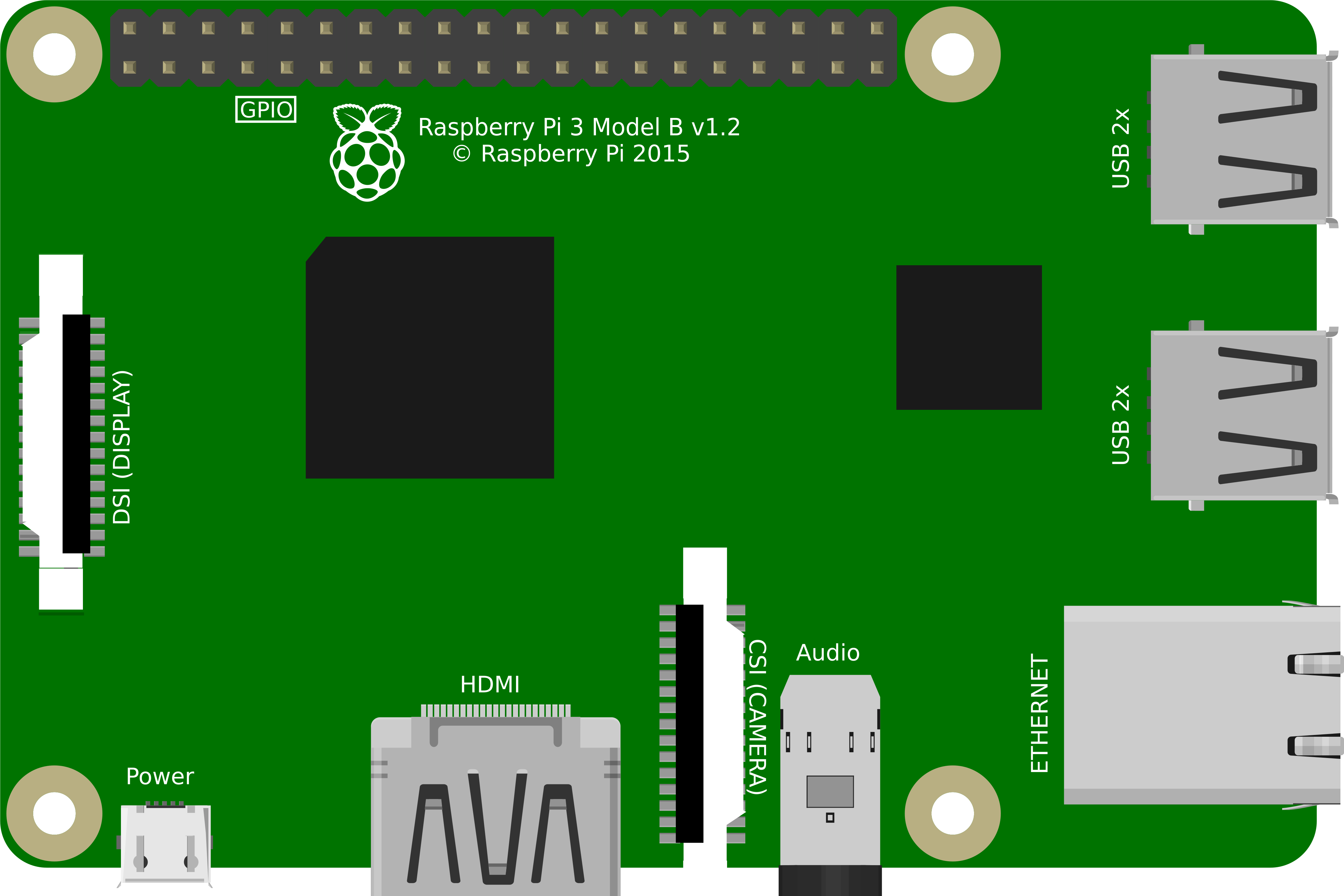
 Design with Raspberry Pi 3B in Cirkit Designer
Design with Raspberry Pi 3B in Cirkit DesignerIntroduction
The Raspberry Pi 3B is a small, affordable computer designed for a variety of electronics projects and programming tasks. It features a quad-core ARM Cortex-A53 CPU, 1GB of RAM, and various I/O options including USB, HDMI, and GPIO pins. This versatile device is widely used in educational settings, DIY projects, and even in professional applications due to its powerful capabilities and extensive community support.
Explore Projects Built with Raspberry Pi 3B
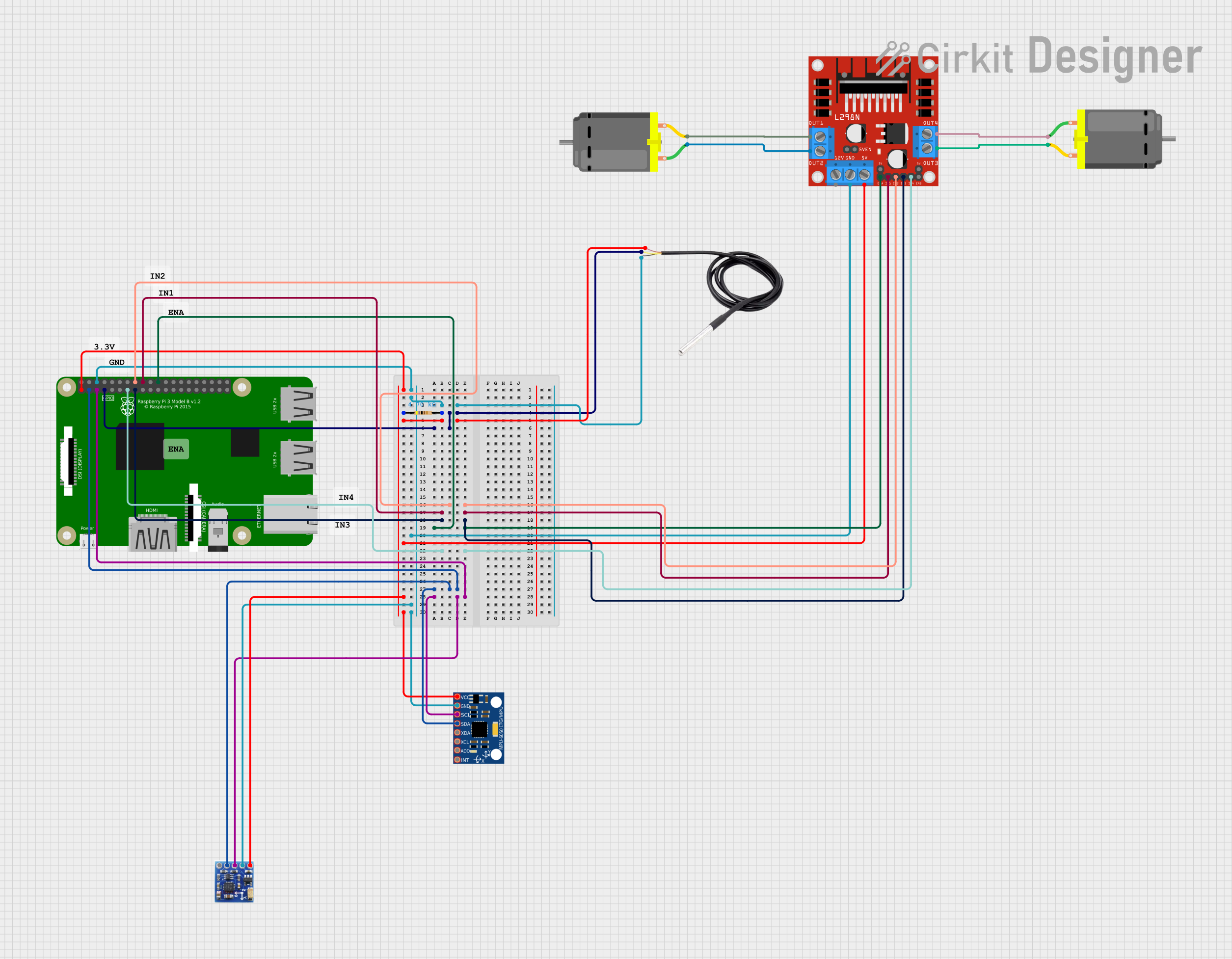
 Open Project in Cirkit Designer
Open Project in Cirkit Designer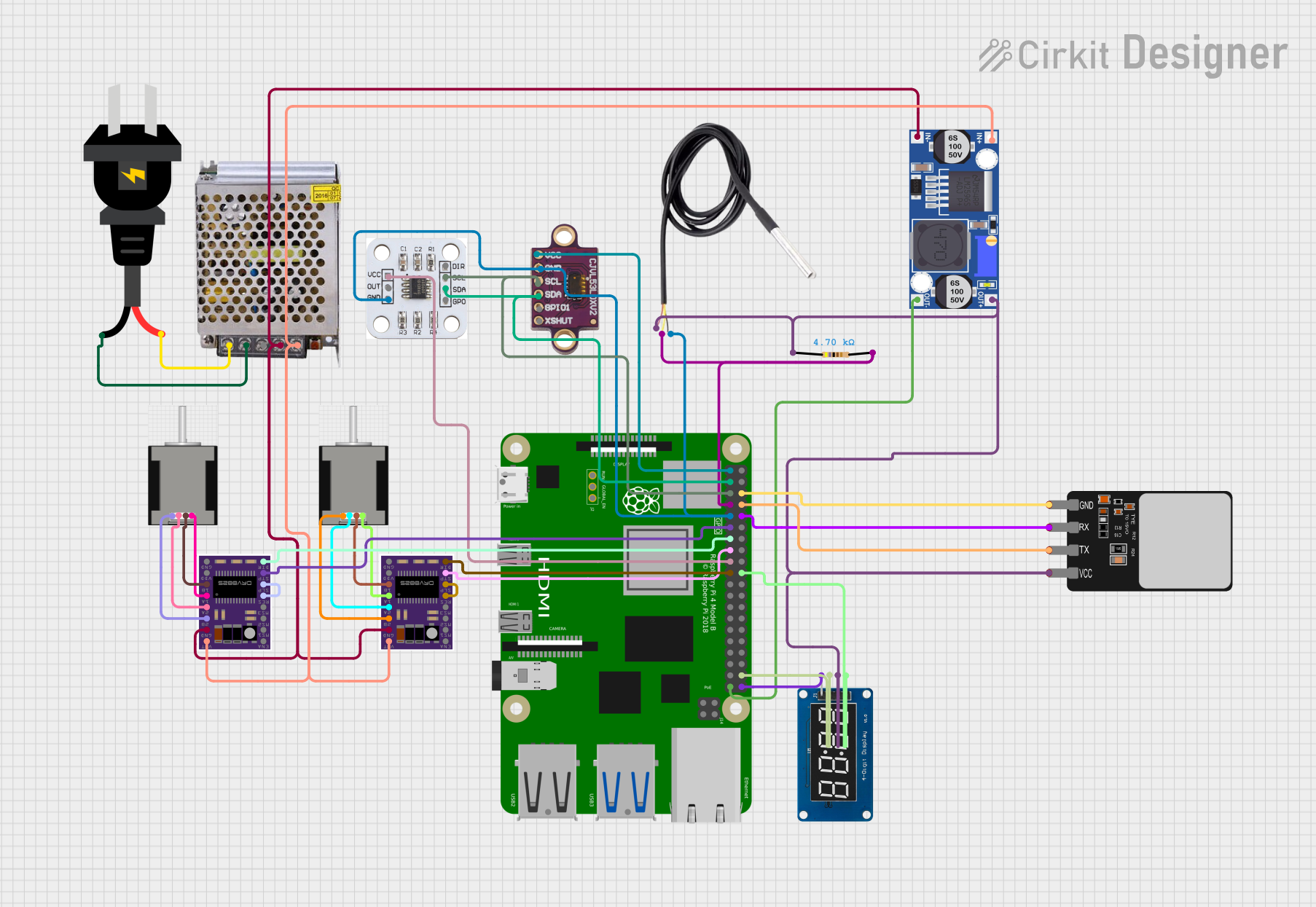
 Open Project in Cirkit Designer
Open Project in Cirkit Designer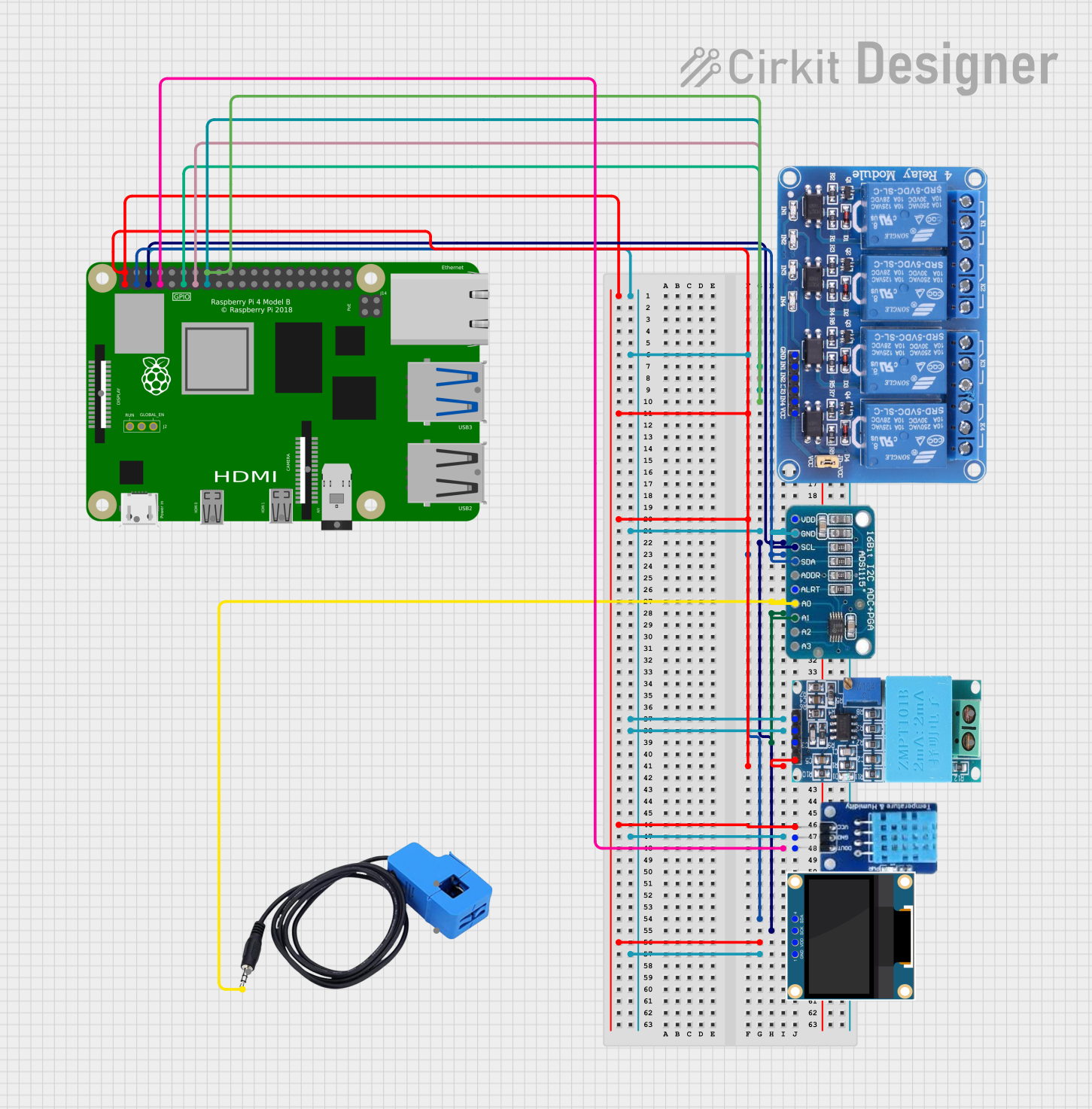
 Open Project in Cirkit Designer
Open Project in Cirkit Designer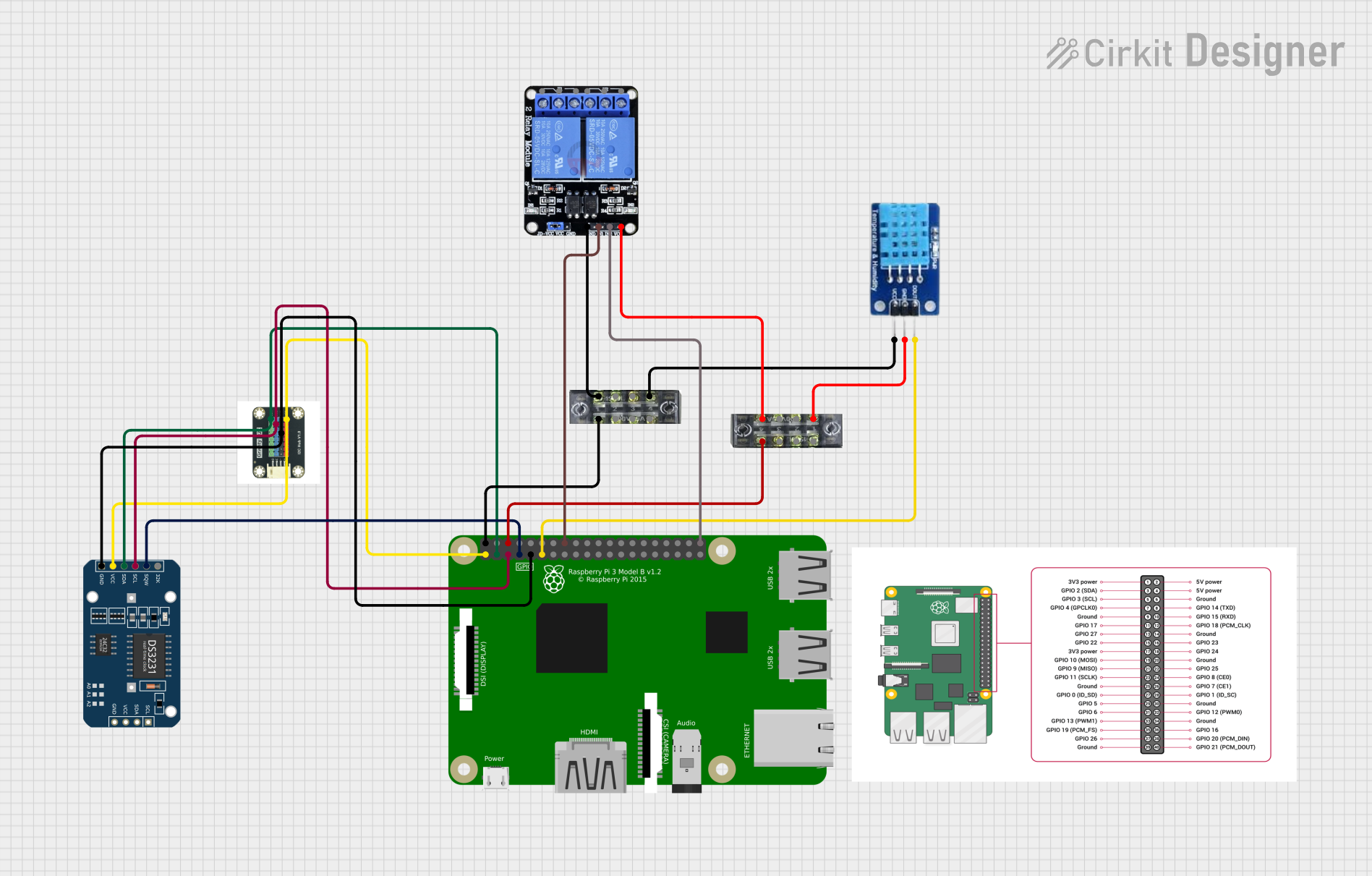
 Open Project in Cirkit Designer
Open Project in Cirkit DesignerExplore Projects Built with Raspberry Pi 3B

 Open Project in Cirkit Designer
Open Project in Cirkit Designer
 Open Project in Cirkit Designer
Open Project in Cirkit Designer
 Open Project in Cirkit Designer
Open Project in Cirkit Designer
 Open Project in Cirkit Designer
Open Project in Cirkit DesignerCommon Applications and Use Cases
- Educational Projects: Ideal for teaching programming and electronics.
- Home Automation: Can be used to control home devices and systems.
- Media Centers: Perfect for setting up a home media center with software like Kodi.
- IoT Projects: Suitable for Internet of Things (IoT) applications.
- Retro Gaming: Can be used to emulate classic gaming consoles.
- Robotics: Often used as the brain of various robotic projects.
Technical Specifications
Key Technical Details
| Specification | Details |
|---|---|
| CPU | Quad-core ARM Cortex-A53 |
| RAM | 1GB LPDDR2 |
| USB Ports | 4 x USB 2.0 |
| HDMI | Full-size HDMI |
| GPIO | 40-pin GPIO header |
| Ethernet | 10/100 Ethernet |
| Wireless | 802.11n Wireless LAN |
| Bluetooth | Bluetooth 4.1 |
| Power Supply | 5V/2.5A DC via micro USB connector |
| Operating System | Compatible with various Linux distributions |
Pin Configuration and Descriptions
The Raspberry Pi 3B features a 40-pin GPIO header. Below is the pin configuration:
| Pin Number | Name | Description |
|---|---|---|
| 1 | 3.3V | 3.3V Power |
| 2 | 5V | 5V Power |
| 3 | GPIO2 | SDA1, I2C |
| 4 | 5V | 5V Power |
| 5 | GPIO3 | SCL1, I2C |
| 6 | GND | Ground |
| 7 | GPIO4 | GPCLK0 |
| 8 | GPIO14 | TXD0 |
| 9 | GND | Ground |
| 10 | GPIO15 | RXD0 |
| 11 | GPIO17 | General Purpose I/O |
| 12 | GPIO18 | PCM_CLK |
| 13 | GPIO27 | General Purpose I/O |
| 14 | GND | Ground |
| 15 | GPIO22 | General Purpose I/O |
| 16 | GPIO23 | General Purpose I/O |
| 17 | 3.3V | 3.3V Power |
| 18 | GPIO24 | General Purpose I/O |
| 19 | GPIO10 | SPI_MOSI |
| 20 | GND | Ground |
| 21 | GPIO9 | SPI_MISO |
| 22 | GPIO25 | General Purpose I/O |
| 23 | GPIO11 | SPI_CLK |
| 24 | GPIO8 | SPI_CE0_N |
| 25 | GND | Ground |
| 26 | GPIO7 | SPI_CE1_N |
| 27 | ID_SD | I2C ID EEPROM |
| 28 | ID_SC | I2C ID EEPROM |
| 29 | GPIO5 | General Purpose I/O |
| 30 | GND | Ground |
| 31 | GPIO6 | General Purpose I/O |
| 32 | GPIO12 | PWM0 |
| 33 | GPIO13 | PWM1 |
| 34 | GND | Ground |
| 35 | GPIO19 | PCM_FS |
| 36 | GPIO16 | General Purpose I/O |
| 37 | GPIO26 | General Purpose I/O |
| 38 | GPIO20 | PCM_DIN |
| 39 | GND | Ground |
| 40 | GPIO21 | PCM_DOUT |
Usage Instructions
How to Use the Component in a Circuit
Powering the Raspberry Pi 3B:
- Use a 5V/2.5A DC power supply via the micro USB connector.
- Ensure the power supply is stable to avoid damaging the board.
Connecting Peripherals:
- Connect a monitor via the HDMI port.
- Attach a keyboard and mouse to the USB ports.
- Optionally, connect to a network using the Ethernet port or Wi-Fi.
Using GPIO Pins:
- The GPIO pins can be used to interface with various sensors, actuators, and other electronic components.
- Use a breadboard and jumper wires to make connections.
Installing the Operating System:
- Download a compatible OS (e.g., Raspbian) and write it to a microSD card.
- Insert the microSD card into the Raspberry Pi and power it on.
Important Considerations and Best Practices
- Static Electricity: Handle the Raspberry Pi 3B with care to avoid static electricity damage.
- Cooling: Consider using a heat sink or fan if running intensive applications.
- Power Supply: Use a reliable power supply to prevent voltage drops and instability.
- Software Updates: Regularly update the operating system and software to ensure security and performance.
Troubleshooting and FAQs
Common Issues Users Might Face
No Display Output:
- Ensure the HDMI cable is properly connected.
- Check if the monitor is set to the correct input source.
- Verify that the microSD card is correctly inserted and has a valid OS image.
Wi-Fi Connectivity Problems:
- Ensure the Wi-Fi credentials are correctly entered.
- Check if the Wi-Fi network is within range.
- Restart the Raspberry Pi and the router.
Overheating:
- Use a heat sink or fan to cool the Raspberry Pi.
- Ensure proper ventilation around the device.
Solutions and Tips for Troubleshooting
- Rebooting: Sometimes, a simple reboot can resolve many issues.
- Checking Logs: Use the command
dmesgor check/var/log/syslogfor system logs. - Reflashing the OS: If the system is unresponsive, try reflashing the OS on the microSD card.
Example Code for GPIO Control with Python
Below is an example of how to control an LED connected to GPIO pin 17 using Python:
import RPi.GPIO as GPIO
import time
Set the GPIO mode to BCM
GPIO.setmode(GPIO.BCM)
Set up GPIO pin 17 as an output
GPIO.setup(17, GPIO.OUT)
try: while True: GPIO.output(17, GPIO.HIGH) # Turn on the LED time.sleep(1) # Wait for 1 second GPIO.output(17, GPIO.LOW) # Turn off the LED time.sleep(1) # Wait for 1 second except KeyboardInterrupt: pass # Exit the loop when Ctrl+C is pressed
Clean up the GPIO settings
GPIO.cleanup()
This code will blink an LED connected to GPIO pin 17 on and off every second. Make sure to connect a current-limiting resistor in series with the LED to prevent damage.
Conclusion
The Raspberry Pi 3B is a powerful and versatile tool for a wide range of applications. Whether you're a beginner or an experienced user, this documentation should help you get started and make the most of your Raspberry Pi 3B. Happy tinkering!